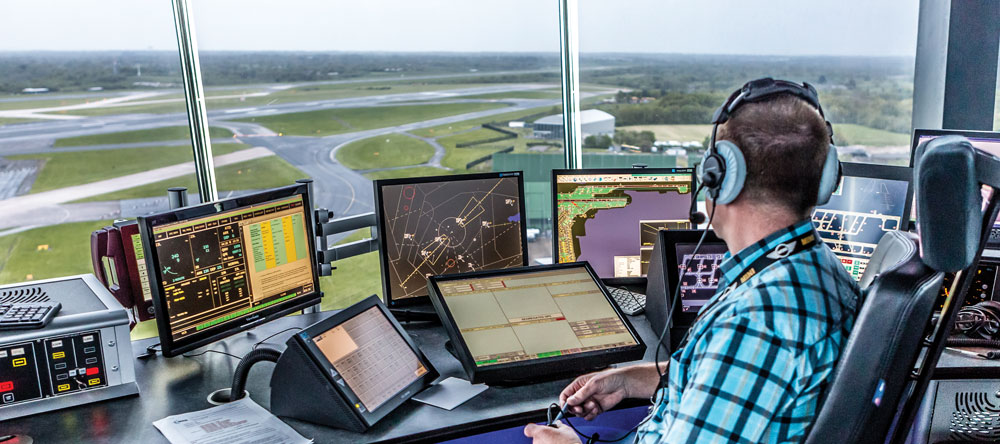AEROSPACE Air traffic control and Covid-19
Pushing tin in a pandemic
As air traffic control marks 100 years since the first control tower, MARTYN CARTLEDGE looks at ATC operations in the UK and talks with NATS about its operations during Covid-19.
 Manchester Airport Tower (all photos via author
unless marked otherwise).
Manchester Airport Tower (all photos via author
unless marked otherwise).
Avital component of airline operations but tucked away in airport control towers and en route centres, invisible to air passengers, are the calm and quiet groups of men and women responsible for moving aircraft around the skies and airport ramps. How do they do this and how has the near annihilation of air traffic, not only in the UK but around the world, affected operations?
To attempt to answer these questions at both a local level and in the wider world, I visited the NATS centre at Manchester Airport. This comprised the visual control room (VCR) and the smaller area control room (ACR) situated in a new facility adjacent to the airport’s main fire station.
Unlike most countries, ATC in the UK is split into two parts, that of en route and airfield with the en route being a Government contract and airfields being controlled with contracts awarded on a commercial basis. Some airfields/operators, such as Liverpool, Doncaster and Teesside, run their own ATC and employ their own controllers directly. Others, such as Manchester and in fact most, if not all of the major airfields in the UK, employ a contractor to supply ATC services in basically the same way as they would employ a contractor to clean the terminals. It was once described to me by a previous ATC Manager as: “It’s Manchester’s train set, we just get to push planes around it!”
Manchester Airport Plc (part of the Manchester Airports Group or MAG), has contracted with NATS which is probably the largest operator in the country and arguably the most well known. In addition to ‘on airport operations’, it also has the Government contract to run the en route service for the whole of the UK.
Entering the facility, it is almost like any office building. The company logo is proudly displayed on the wall and doors lead off the corridors. For obvious reasons the tower, or VCR as it is more correctly termed, is right at the top.
Once inside, the overriding impression is of cool calmness. If you ignored the magnificent view of the airfield out of the panoramic windows you could almost think this was any other office workplace until, of course, you look at what is on the computer screens at each workstation.
Modern air traffic control systems differ from those used in the past, as what is seen on the controllers’ screens is no longer the actual radar

